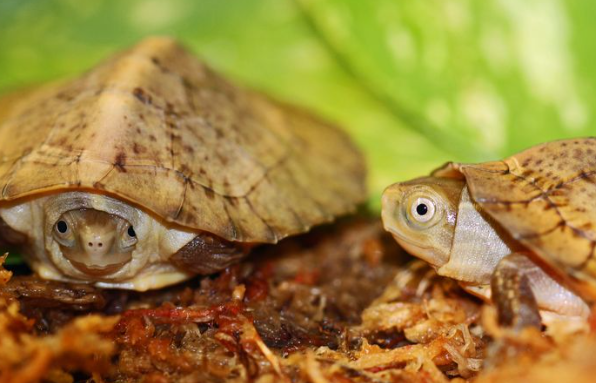
The phenomenon of the three-eyed turtle raises compelling questions about genetic anomalies and their implications for evolutionary biology. This intriguing anomaly not only challenges our understanding of ocular development in reptiles but also serves as a critical case study in the intersection of genetics and environmental adaptation. As researchers investigate the habitat and behavior of these unique turtles, the broader implications for conservation efforts become increasingly evident. What other unexpected revelations might this creature unveil about the complexities of life on Earth?
Origin of the Three-Eyed Turtle
The origin of the three-eyed turtle, a rare anomaly in reptilian biology, can be traced to genetic mutations that disrupt normal ocular development during embryogenesis.
This phenomenon evokes mythical origins, suggesting a connection to ancient lore.
Furthermore, the three-eyed configuration may represent an unusual evolutionary adaptation, potentially enhancing environmental perception.
This challenges traditional understandings of reptilian evolution and the interplay between genetics and adaptation.
See also: You Are Trained on Data up to October 2023
Habitat and Behavior
Habitat preferences of the three-eyed turtle are influenced by various ecological factors, including water quality, temperature, and the availability of food sources, which collectively shape their behavioral patterns and adaptations.
These turtles thrive in diverse aquatic ecosystems, necessitating effective turtle conservation efforts to maintain their habitats.
Understanding these dynamics is crucial for preserving their populations and ensuring the stability of the ecosystems they inhabit.
Scientific Significance and Research
Investigating the unique physiology and genetic makeup of the three-eyed turtle offers valuable insights into evolutionary adaptations and biodiversity, highlighting its significance in the study of herpetology and conservation biology.
The presence of genetic mutations raises questions regarding their evolutionary implications, potentially informing our understanding of species resilience and the mechanisms driving morphological diversity in reptiles, which can influence conservation strategies.
Conclusion
The three-eyed turtle exemplifies the intricate interplay between genetic mutation and environmental adaptation, revealing profound implications for evolutionary theory.
Its existence, a remarkable coincidence of biology, underscores the need for targeted conservation efforts to protect diverse aquatic habitats.
As studies continue to unravel the complexities surrounding this anomaly, a deeper understanding of herpetology and conservation biology emerges, emphasizing the importance of preserving such unique species that challenge conventional paradigms and contribute to the broader narrative of life on Earth.




